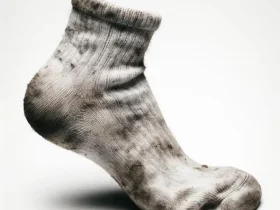
Table of Contents
A neck sprain, also known as a cervical sprain, occurs when the ligaments in the neck are forcefully stretched or torn. This can happen from sudden movements that jerk the head back or forward, or from impacts to the head or neck. Neck sprains range in severity from mild to severe, with pain, stiffness, and limited range of motion being common symptoms.
While a sprained neck often heals on its own with rest, there are certain things you’ll want to avoid while recovering to prevent further injury and facilitate the healing process. Here’s a look at what to avoid if you have a sprained neck.
Avoid Moving the Neck Suddenly
When you have a sprained neck, sudden movements can aggravate the injury and cause additional pain and inflammation. Try to avoid any jerky head turns or quickly looking up or down. Move your neck slowly and carefully without forcing it into positions that cause discomfort or strain.
You’ll also want to avoid any jolting neck movements during activities like sports, exercise, or dance. Take care when getting in and out of vehicles to move your neck gradually. Use your whole body to turn rather than just your neck. Move deliberately and cautiously until the sprain has fully healed.
Don’t Use Neck braces Improperly
Some doctors recommend using a soft cervical collar or neck brace to stabilize and support the neck after a sprain. However, neck braces need to be used properly to avoid doing more harm than good. Don’t wear a brace constantly for long periods without removing it. Take the brace off periodically to move and stretch the neck gently. Prolonged bracing can cause the neck muscles to weaken and stiffen up.
Only wear a neck brace as recommended by your doctor and take it off to sleep unless otherwise instructed. Improper bracing can hinder the healing process. Make sure to follow all usage directions that come with the brace.
Avoid Heavy Lifting
Lifting, carrying or moving heavy objects can strain the injured neck tissue and lead to recurring injury. Avoid any strenuous lifting with the arms, such as lifting weights, luggage, small children or pets. Get help from someone else to carry or move heavy items if necessary.
When you do lift lighter items, use proper form by keeping the object close to your body and lifting with the legs. Don’t extend your neck forward or twist it while lifting. Carry items close to your chest with elbows bent rather than letting arms hang down holding objects far away from your body. Take care to avoid undue neck strain.
Go Easy on Exercise
Exercise and physical activity can increase blood flow and promote healing for minor neck sprains, but more strenuous workouts can re-injure the neck. Avoid exercises that require forceful neck movements or put strain on the neck such as weight training, yoga, overhead presses, or any exercises involving inversions. Also steer clear of contact sports or activities that could impact the injured neck.
Instead, focus on gentle exercises that don’t stress the neck such as walking, stationary cycling or swimming. Move the neck carefully during workouts without pushing it too far. Do some gentle neck stretches and exercises to relieve stiffness when cleared by your doctor. Build back up to more intense workouts gradually over time as your neck heals.
Avoid Chiropractic Neck Manipulation
It’s best to avoid having your neck manipulated or adjusted by a chiropractor while recovering from a sprain. Manipulation manually moves the joints and neck vertebrae beyond their usual range of motion, which can worsen an existing injury. Get clearance from your doctor before receiving any chiropractic treatments.
Your doctor and chiropractor may determine that gentle, modified adjustments may be helpful for restoring mobility once initial healing has taken place. But traditional neck manipulation risks damaging already strained ligaments and muscles that need time to mend. Give your injury proper rest by avoiding forceful adjustments early on.
Use Proper Posture and Neck Positioning
Slouching or holding your neck in bent positions for prolonged periods can worsen pain and inflammation. Try to maintain proper upright posture as much as possible, whether sitting, standing or walking. Refrain from hunching over desks, phones or handheld devices.
When sitting, use a chair that provides firm support for your lower back. Position computer screens at eye level to avoid excessive neck bending. Place a pillow or rolled-up towel behind your neck for support if driving or sitting for long intervals. Holding your neck in the same position for too long can cause stiffness, so get up and move around periodically if possible.
Take Short, Frequent Breaks at Work
If you have a desk job or spend long hours on a computer, take regular short breaks to give your neck relief. Set a timer to remind yourself to get up every 30 minutes or so. Gently stretch and rotate your neck. Avoid cradling the phone on your shoulder for extended conversations. Use a headset instead if you frequently talk on the phone and computer simultaneously.
Prolonged sitting forces the neck into sustained bent positions that can be problematic. Stand up and walk around for a few minutes periodically to give your neck a break. Be sure to get up and move around for longer intervals during your regular breaks and lunchtime as well. Frequent movement aids circulation and reduces neck strain.
Sleep on Your Back with Neck Support
Sleeping with proper neck support can make a difference in how you feel when you wake up. Avoid sleeping facedown or on your stomach, which twists the neck and strains muscles. Instead opt for sleeping on your back, which allows the neck to rest in a neutral position.
Place a rolled-up towel or cervical pillow designed to cradle the neck beneath your neck for support. This helps maintain the natural curve of the cervical spine during sleep. A contoured pillow that provides a neck indent also works well for side sleepers. Experiment with different orthopedic pillows to find the most comfortable option.
Avoid Stressful Activities
When recovering from a neck sprain, engaging in stressful or demanding activities can cause tense neck muscles that hinder healing. Try to avoid stressful situations at home and work when possible. Make time for relaxing activities such as light reading, listening to music, taking baths, or leisurely walks.
Practice relaxation techniques like deep breathing, meditation, yoga, tai chi, or massage therapy to unwind muscle tension. Get plenty of rest and don’t overexert yourself. Allow others to help out with household responsibilities if necessary. Follow your doctor’s activity recommendations and make the most of your recovery time.
A neck sprain can be painful and limit your mobility, but taking care to avoid further strain on the injured area can promote healing. Moving your neck gently while resting it frequently, maintaining proper posture, and sleeping with neck support will all aid the recovery process. Avoiding chiropractic manipulation and stress are also advised. With proper precautions and rest, you’ll be back to normal motion and activity before you know it.













